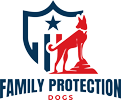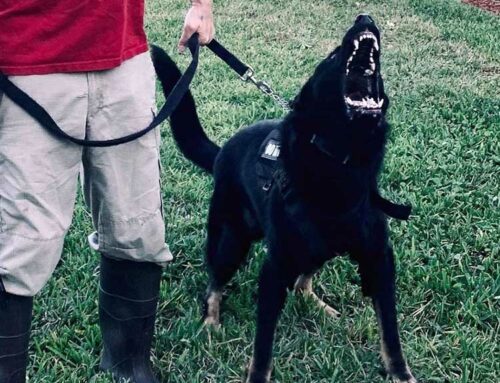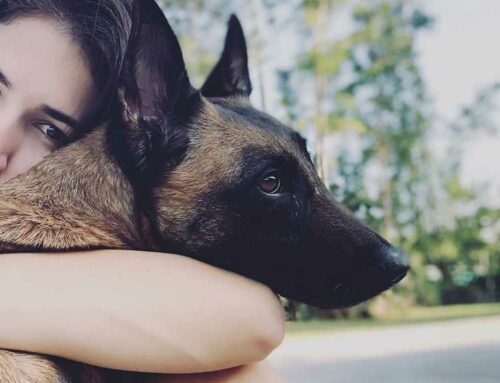How a Former Navy Seal Turns an Attack Dog Into Your $100,000 New Best Friend

What is a Personal Protection Dog?
The dogs learn how to behave in every situation—indoors, outdoors, the car, the private jet, the supermarket, and the corner coffee shop.
PPDs, short for personal protection dogs. These animals have two jobs: first, to act as 24-7 bodyguards for their owners and their families, detecting and assessing threats and responding appropriately; and second, to be, well, good dogs. The best PPDs are guided by intensive training, instinct, and a set of verbal and physical commands from their owners.
THE PERFECT PROTECTION DOG KNOWS WHEN TO BARK AND WHEN TO BITE, AND IT CAN TURN BACK INTO A DOCILE PET AFTER AN INCIDENT.
Personal Protection dogs, like safe rooms, bodyguards, and threat assessment reports, are part of a new wave of security measures taken by one-percenters. The repertoire of situations the dogs are taught to handle includes carjackings, home invasions, and random street attacks. To those and other scenarios they learn the correct reaction: when to merely alert and when to “neutralize the threat.”
Most amazingly of all, after an incident they must be able to mellow out and change back into a docile pet. If this sounds practically impossible, it is. Ritland estimates that around 1% of all dogs have this capability.
Bodyguards Aren’t Just for Celebrities Anymore
You may think you have seen a PPD. Possibly you may confuse one with a pet dog whose barking breaks your eardrums at the sound of the doorbell. Maybe the image that comes to mind is a slavering junkyard pit bull tethered to a chain. In both cases you would be wrong. To those who know human and canine behavior, the junkyard dog (like the human neighborhood bully) will probably turn tail and run if it meets a serious contender. A true PPD will often fight to the death.
What breed is best for personal protection?
Ritland travels the world looking for candidates, but many of his best finds come from the Netherlands. Each dog’s lineage must be as scrupulously delineated as a Mayflower descendant’s. He prefers to work with three breeds: German shepherds, Dutch shepherds, and his favorite, the Belgian Malinois.
When full grown, a Malinois weighs around 60 pounds, and the breed is famous for hypervigilant, athletic behavior. If you have never seen one, visualize a German shepherd, shrink it down a bit, and torque it up to the red line in energy and aggression.
What does a Personal Protection Dog cost?
Fully trained Trikos PPDs cost between $55,000 and $100,000. Ritland’s customers include celebrities and private individuals who face unique security concerns—because of where they live, what they do, or how big their bank accounts are.
Many demand anonymity, but some are happy to talk about Ritland and his dogs. “Working with Mike when he brought Ike to live with us at our farm was such a life-changing experience,” says the singer Wynonna Judd, who purchased her Trikos dog in 2016. “Ike and I have become inseparable, and having him as part of my personal and professional life has given me such a sense of peace.”
Ike and I have become inseparable, and having him as part of my personal and professional life has given me such a sense of peace. —Wynonna Judd, on her Ritland-trained Personal Protection Dog
There are other specialized PPD trainers in the U.S. and abroad, some of whom charge more than Trikos. Many keep a ready-to-go supply of animals in their kennels to meet demand. Ritland takes a different approach, personally training one dog at a time and matching it to the right owner.
Along with working with each PPD individually, Ritland lives with it in his home during training. Bringing a dog into his house, he says, helps replicate the type of environment it will eventually live in. The trainees learn how to behave in every situation—indoors, outdoors, the car, the private jet, the supermarket, and the corner coffee shop. They learn to bond with whole families and be gentle around children and visitors.
Soon after I arrive, it’s showtime: a private matinee just for me. I will get to see a PPD in training go through its paces. Ritland has donned a bite suit so well padded that it doubles his size. Working with his kennel assistant, he calls forth a large black dog that, like a fur-enrobed missile, crosses a big open field in about 30 seconds and launches itself at Ritland, fighting and biting him in a frenzy of flashing teeth and slobber and ultimately taking him to the ground.
Ritland fights back with all his strength and skill, lifting the dog off the ground and swinging it in circles, but even encased in the bite suit his face contorts in pain, and the sleeve of the suit is bloodied after the attack.
This kind of unswerving intensity is known as “heart,” the holy grail of personality traits that Ritland looks for in his canine candidates. Can a dog with this type of ferocity be suitable to live with a family and possibly have a tiny child put, say, a cardboard crown on its head for a birthday party and kiss it on the lips? The answer is a solid yes, but with conditions.
New home transition
Once Ritland is comfortable with a match, he moves the dog, and himself, into the new owner’s home. Although some clients are surprised to learn they will be hosting Ritland, it’s a vital part of the process. The animals must get used to the new owners; the owners have to learn to care for and command their powerful new charges. “My wife, daughter, and I enjoyed having Mike stay with us while he transitioned Quinto into our family,” says Harvey Allon, CEO of Braddock Financial, a Colorado investment firm. “Our smaller dogs were less thrilled, but Mike got them comfortable as well. As Quinto adapted, Mike backed away from interacting with him. We were sad to see Mike leave but happy to have Quinto all to ourselves.”
The sizable price tag of a Trikos PPD can create a unique set of challenges for Ritland. Some potential owners have unrealistic expectations. “They want a unicorn,” he says, a caped superhero combined with a kindly Mary Poppins. Ritland goes to great lengths to explain that he delivers a dog—granted, a very highly trained dog, but still a dog.
Canines, he points out, do not think the way people do. They are simple association creatures that learn to link a noise or a gesture with a reward. Even Ritland’s most sophisticated training rests on this fact.
So how does one get the most from these amazing animals? Ritland tells owners that they must respect, protect, and care for their dogs and provide a stable environment. But most of all they must make an emotional connection. A dog does not know that you just wrote a check for $100,000 and now expect it to love you. And why would it lay down its life for you if it doesn’t even like you? So you must do what humans and canines have been doing for ages: bond.
This story appears in the October 2017 issue of Town & Country.



